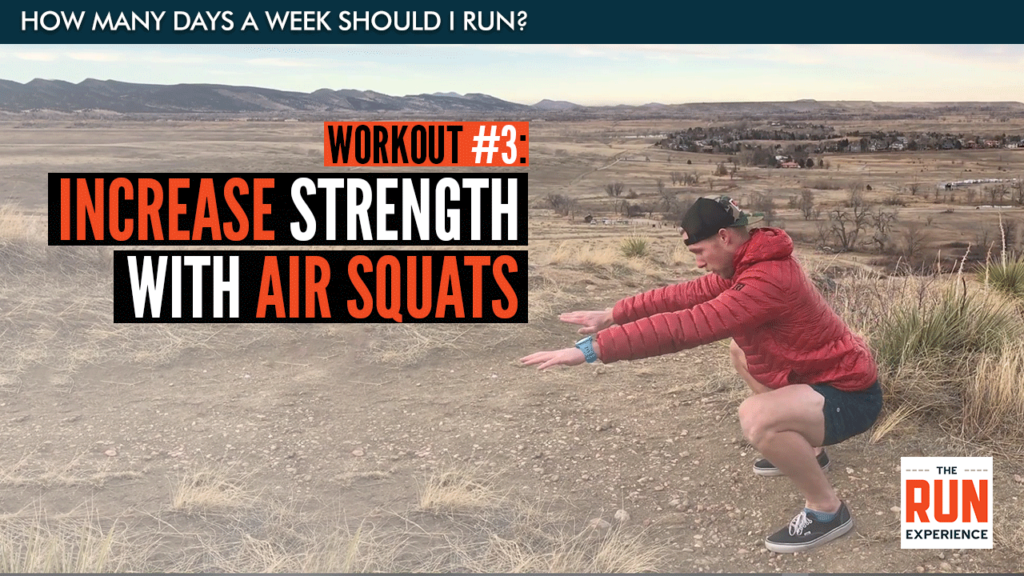How Many Days A Week Should I Run? Getting Started with Couch to 5k

If you’re asking yourself, “How many days a week should I run for my first 5k?” then we’ve got you covered! Here is what your training week could look like when you’re getting started from scratch.
Remember, just because you’re training for a certain distance doesn’t mean you have to go crazy on your training. Don’t feel pressured to run every day! In fact, that can be a sure path to injury, especially if you’re just getting started. Rather than trying to fit in a run every single day of the week, space out your efforts and make sure to have a specific focus for each of those runs.
How Many Days A Week Should I Run? 3 Comprehensive Workouts for Couch to 5k
1. Increase Your Distance
Your first workout of the week will focus on increasing your distance. Don’t worry, you’ll build up in small increments! To start off, try a 10-minute run. To make this run approachable and sustainable, we’re actually going to break it up in running and walking sections.

For each minute of the 10-minute run, you’ll run for 30 seconds and then walk for 30 seconds. During the running portion, focus on keeping a nice, tall posture. This will help with your breathing, as well as feeling stronger. Be sure to swing your arms straight back and forth (instead of swinging them cross-body) to power you forward.
When you stop for your 30 seconds of walking, you’ll keep that tall posture and arm swing. Breath deeply into your stomach to engage your core and oxygenate your blood. Don’t be tempted to stroll along–this is still part of your workout!
Having started your first week with 10 minutes, try to add an additional five minutes to the run each week. Your goal is to build to 30 minutes over five weeks, all the while sticking with your 30 run/ 30 walk method.
- Week 1: 10 minutes
- Week 2: 15 minutes
- Week 3: 20 minutes
- Week 4: 25 minutes
- Week 5: 30 minutes
If you need to add an extra week here or there where you maintain the same time as the week before, go for it! Better to feel comfortable and in control before asking more of your body on the run.
2. Increase Your Intensity
On to the second workout of the week! For this workout, you’ll focus on upping the intensity of your running portion. Not only will this help build your strength and endurance, but it’s also a great way to build mental toughness. Starting running can be uncomfortable. You feel out of breath, your legs burn, or you feel awkward. We’ve all been there!
Rather than feel discouraged by those factors, use it as motivation to attack the hills in this workout. You’ll still have plenty of walking breaks built-in, so you’ll be able to fully recover between efforts.

Start by finding a hill that’s runnable at a slow jog. This might be around 3% incline on the treadmill or a gentle slope on the road.
Just like the first workout, you’ll run up the hill for 30 seconds, remembering to stay tall and avoid slumping forward. If the only hill you can find is too steep to run the whole way, you can definitely walk for part of your 30 seconds of work. Just make sure to walk with purpose and keep a brisk pace.
To recover, turn around and walk back down the hill to your starting point. If you’re on a treadmill, just reduce the include to 0%. Once you’re at the bottom, make sure you’ve caught your breath and you feel fully recovered before starting the next hill repeat.
You’ll complete six to height hill repeats for this workout. The range is there so you can find the right amount for yourself. Maybe you start with six repeats for the first two weeks while you’re getting used to the work, then in the third week, you bump up to seven repeats–it’s your call! As always, you want to challenge yourself, but also be smart about your effort.
3. Increase Your Strength
This third and final workout will look a little different from the other two. Instead of only running, you’re also going to build some strength work into the run. Don’t worry, you won’t need to lug any equipment around with you!

The 30 seconds work, 30 seconds rest formula will be familiar to you now. We’re adding a new component to this workout, though. To start, you’ll run 30 seconds just like you did in the first workout of the week. After that interval is up and before you start walking, you’ll complete 5 bodyweight air squats. After the squats are completed, you’ll walk for whatever time is left in your 30 seconds of rest.
This might look like 30 seconds of running, 10 seconds for your 5 air squats, and 20 seconds of walking. Or, if you need 15 seconds for the air squats, then you’ll have 15 seconds left over to walk.
The purpose of these squats is not only to build muscular strength in your legs, but also to get you thinking about your form and posture while running. We mentioned above that you want to avoid slumping over when you’re running, which is a common habit in new or inexperienced runners.
At the top of these air squats (when you’re standing straight up again), you’ll want to make sure to squeeze your butt and push your hips forward. This teaches your body–and your booty!–to stay engaged while running, which helps power you forward and keeps you standing tall.
What About The Rest of the Week?
You’ll set up the three workouts described here throughout the week. Try alternating each workout with a day off, rather than completing all three back-to-back. For example, you could complete the workouts on Monday, Tuesday, and Wednesday. The remaining days of the week are recovery days, but that doesn’t mean just sitting around!
Active Recovery
Hydration
Staying hydrated isn’t just about drinking water before or after your workout. More importantly, make sure to drink water regularly throughout your day, including your recovery days. Don’t feel like you have to hit a certain target, necessarily. Drink to thirst, or try carrying a water bottle with you to work or school so you always have some nearby.
Mobility
Perhaps one of our favorite topics, mobility is more than just your old-school stretching (though that has its place, too). Mobility is about working on your range of motion and making sure your joints are able to move in all the ways they’re designed to. Your shoulders, hips, and ankles all benefit from daily mobility work, and it can really help with your recovery.

Some of our favorite mobility drills include shoulder rotations, hip circles, and using a lacrosse ball or other small ball to dig into the hamstrings and calves. In fact, we’ve got a whole plethora of mobility resources for you, including this one with a basic mobility and stretching routine.
Quality Sleep
Who doesn’t want more sleep? A lot of us tend to skimp on sleep on a regular basis, but as you get started on your training, it’s important to try to safeguard that rest time.
Quality sleep is beneficial not only to your body’s physical recovery, but also for your hormone regulation, appetite, and stress levels. Our resident nutritionist has tons of helpful tips for how important quality sleep is, as well as how your nutrition habits can affect your sleep. Who knew?
If you’re ready for even more training goodies and how to keep progressing your training beyond your first 5k distance, check us out in our app! Full training programs, an active community, and follow-along workouts await.
